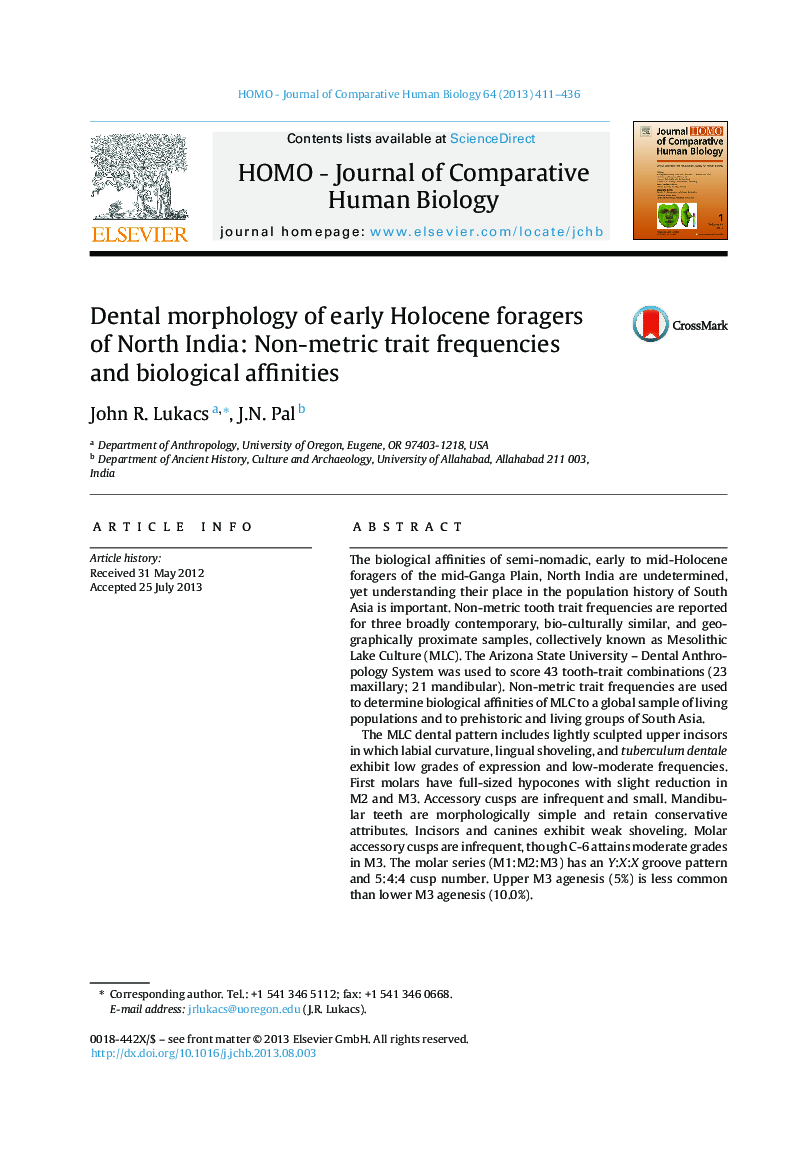| کد مقاله | کد نشریه | سال انتشار | مقاله انگلیسی | نسخه تمام متن |
|---|---|---|---|---|
| 100309 | 160978 | 2013 | 26 صفحه PDF | دانلود رایگان |

The biological affinities of semi-nomadic, early to mid-Holocene foragers of the mid-Ganga Plain, North India are undetermined, yet understanding their place in the population history of South Asia is important. Non-metric tooth trait frequencies are reported for three broadly contemporary, bio-culturally similar, and geographically proximate samples, collectively known as Mesolithic Lake Culture (MLC). The Arizona State University – Dental Anthropology System was used to score 43 tooth-trait combinations (23 maxillary; 21 mandibular). Non-metric trait frequencies are used to determine biological affinities of MLC to a global sample of living populations and to prehistoric and living groups of South Asia.The MLC dental pattern includes lightly sculpted upper incisors in which labial curvature, lingual shoveling, and tuberculum dentale exhibit low grades of expression and low-moderate frequencies. First molars have full-sized hypocones with slight reduction in M2 and M3. Accessory cusps are infrequent and small. Mandibular teeth are morphologically simple and retain conservative attributes. Incisors and canines exhibit weak shoveling. Molar accessory cusps are infrequent, though C-6 attains moderate grades in M3. The molar series (M1:M2:M3) has an Y:X:X groove pattern and 5:4:4 cusp number. Upper M3 agenesis (5%) is less common than lower M3 agenesis (10.0%).Smith's Mean Measure of Divergence (MMD) and Ward's minimum variance cluster methods are used to assess inter-group bio-distance in global and regional South Asian settings. In the global comparison, multi-dimensionally scaled MMD values reveal three groups: African, Asian, and a third group composed of MLC, prehistoric South Asians, and European samples. Within South Asia, MMD and cluster analysis find MLC's closest affinities to the Chenchu, a living tribal group of Andhra Pradesh. This result contradicts earlier assertions based on osteological assessment that descendants of Mesolithic foragers of North India (MLC) cannot be identified in the Indian subcontinent. The next closest affinity is with Chalcolithic and Neolithic groups of Pakistan and with a late Chalcolithic group (INM) of west central India. As knowledge of the dental morphology of living and prehistoric South Asians increases, the population history of the subcontinent and its role in understanding world-wide patterns of migration will be clarified.
Journal: HOMO - Journal of Comparative Human Biology - Volume 64, Issue 6, December 2013, Pages 411–436